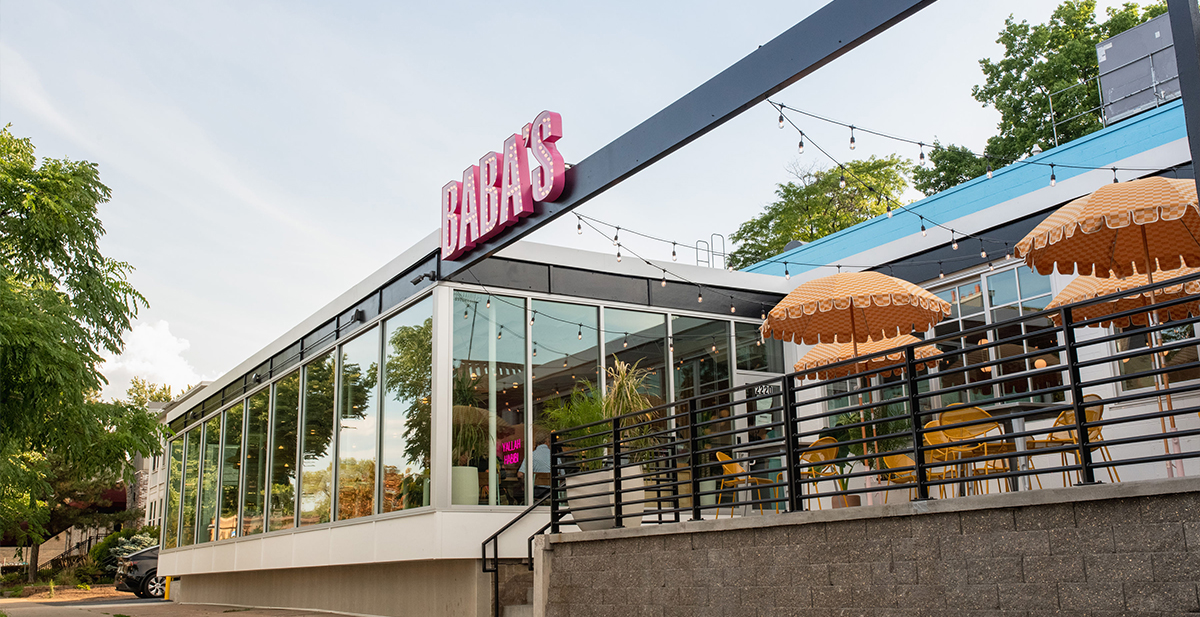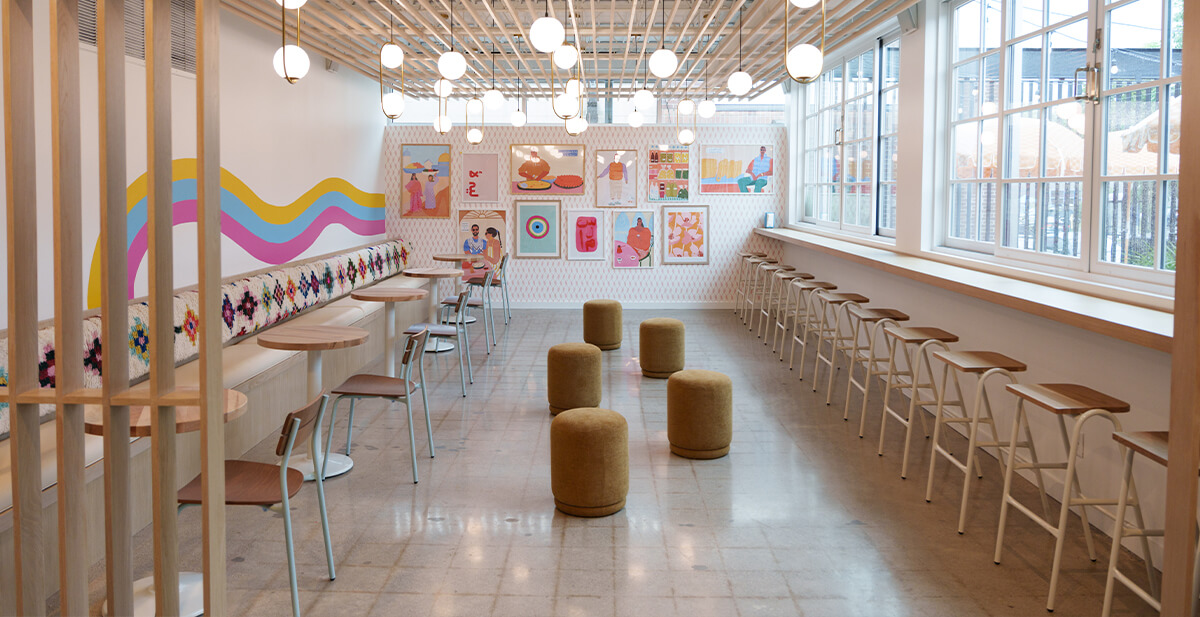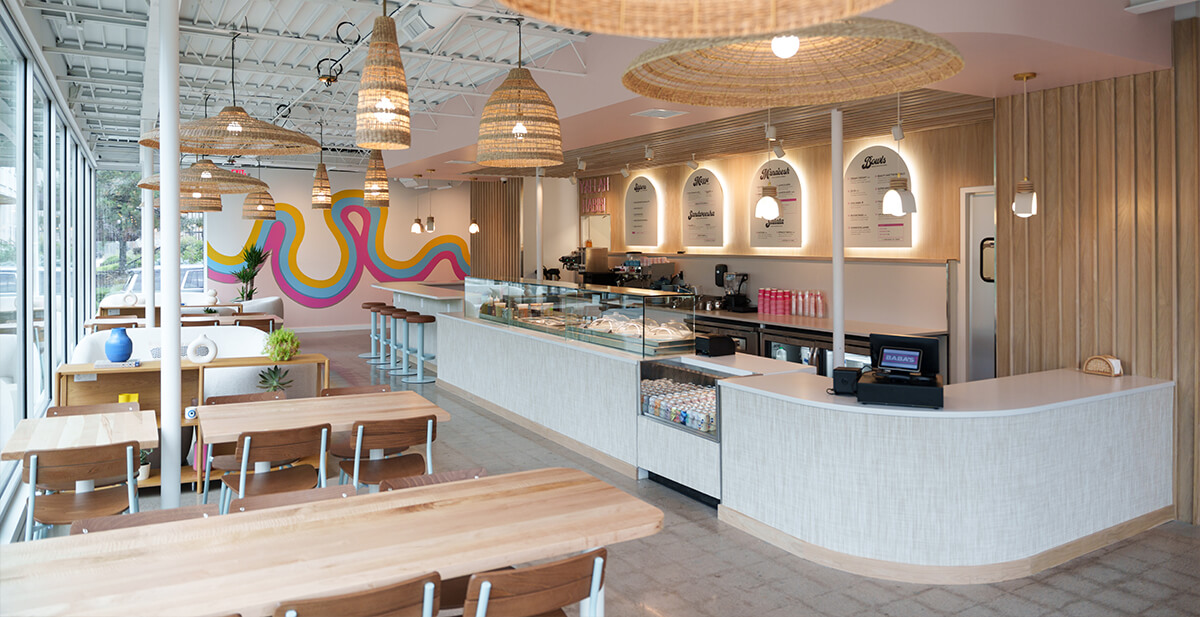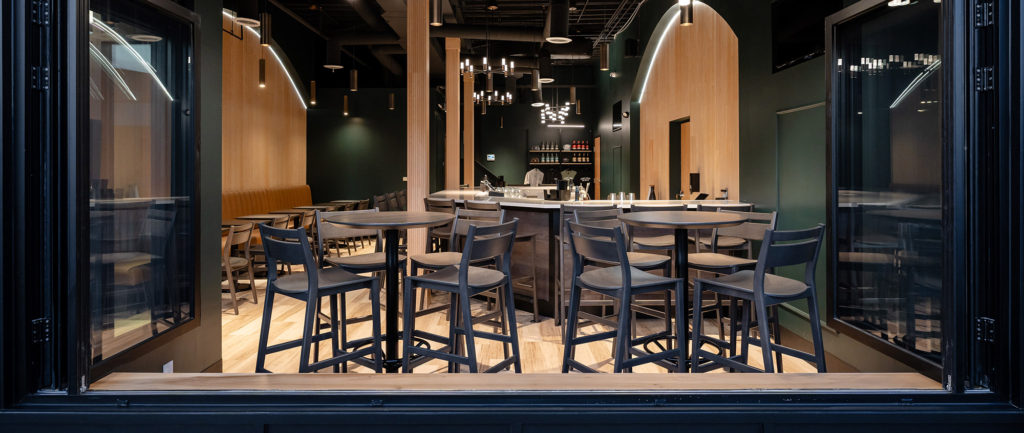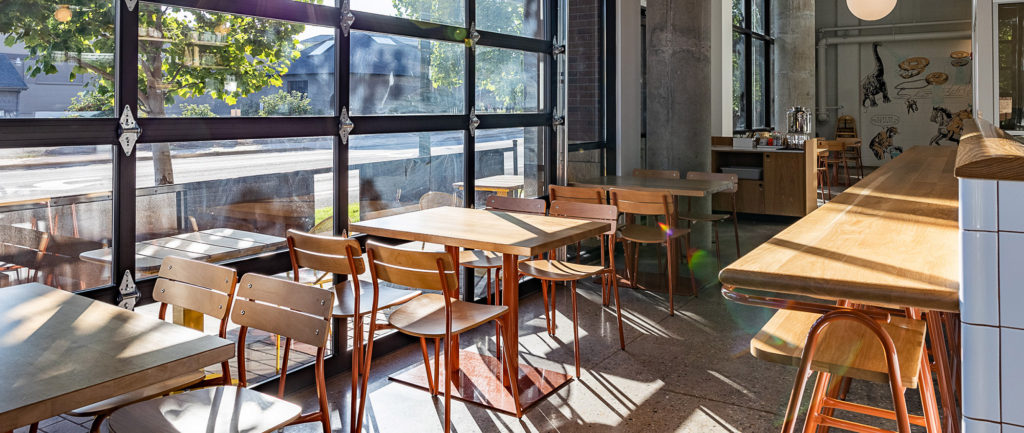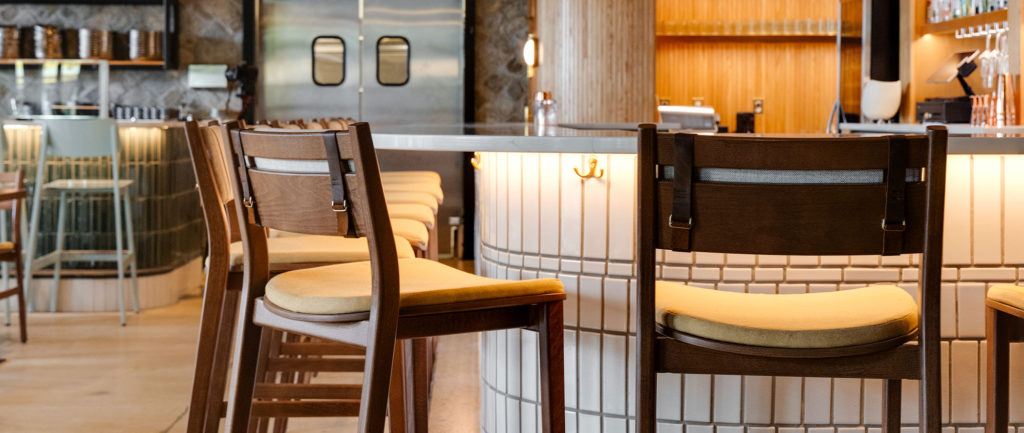Supporting Brand Identity with a Colorful, Yet Balanced Interior
Partnering with Jeremy Nelson of Little Box, Inc., Baba’s has transformed a once vacant building into an airy, modern Hummus House and mana’eesh bakery.

Interior design is not just about creating a visually appealing space; it's about weaving the spirit of a brand into every nook and cranny. One such story is the transformation of Baba's Hummus House which has just opened its very first brick-and-mortar location in Minneapolis, Minnesota. In partnership with Little Box, Inc., Baba's Hummus House has turned into a true extension of its existing brand.
An Unexpected Beginning For Little Box, Inc.
In 2005, Little Box, Inc., an Architecture and Design firm in Minneapolis, began when a toy company approached owner Jeremy Nelson not as an architect, but as a designer. Initially, they wanted him to design toys, but halfway through the project, the toy company had a change of heart. They decided that they wanted to credit an architect with the toy design. This greatly accelerated Jeremy's career goals, as he became a registered architect in just three months.
Since then, Little Box, Inc. has evolved into a dynamic, creative design studio specializing in interior design for various spaces. Little Box, Inc. doesn't believe in a one-size-fits-all approach, making them the perfect partner for Baba's unique and growing business. Jeremy collaborates with a diverse team of experts, including interior designers, graphic designers, creative design specialists, drafters, a copywriter, rendering experts, and more, who have all ventured out on their own after working for larger firms.
An Existing Brand Story, And How It Came to Be
Described as modern Middle Eastern food by Rana Kamal and Khalid Ansari, the Palestinian-American sibling duo behind the brand, Baba's aims to recreate family recipes — with a modern twist. Raised in Minnesota by Palestinian immigrant parents, the siblings grew up surrounded by their parents' dedication to authentic and homemade cuisine. They couldn't help but notice that the hummus found in mainstream stores fell short of their family's cherished Jerusalem-style version — creamy, velvety, bursting with flavor. It was this realization that prompted them to seize the opportunity to offer a distinctive, niche product that serves as a representation of their Palestinian and American sides coming together.
Named after their father, Baba's began in 2018 with the launch of five hummus flavors, sold in a handful of local grocery stores. Fast forward to today: you can now find Baba's Hummus in over 500 retail stores across the Midwest. While their delicious hummus remains a cornerstone of their offerings, the brand has expanded its repertoire to include hummus bowls, which gained immense popularity when served from their Airstream food truck at the Minnesota State Fairs.
Colorful, Yet Balanced
The success of Baba's retail efforts warranted them to open their first brick-and-mortar location — Baba's Hummus House in Minneapolis, Minnesota. Partnering with Jeremy Nelson of Little Box, Inc., Baba's has transformed a once vacant building into an airy, modern Hummus House and mana’eesh bakery outfitted with rattan lamps, a curved counter, and colorful murals and textiles.
Little Box, Inc's journey with Baba's Hummus House was a delightful exploration of merging interior design and brand identity. Taking into consideration Baba's strongly established brand, Jeremy's task was to ensure that this brand identity seamlessly translated into the physical space of the restaurant. The guiding principle behind the interior design of Baba's Hummus House was to craft a space that exuded vibrancy, warmth, and an unwavering allegiance to the brand's essence.
As you step inside, you're greeted with a burst of color, yet it never overwhelms the senses. Jeremy emphasized the importance of steering clear of generic trends and instead focused on curating an environment that was genuinely distinctive. Little Box, Inc. struck a harmonious balance, infusing a sense of playfulness into the design while upholding an air of sophistication.v
Complimenting an Established Identity
When it came to furniture selection, the goal was to select pieces that would feel like a natural extension of the brand. Often using words like "smooth" to describe their hummus, Jeremy took inspiration from Baba's marketing and product descriptions to select furniture that echoed Baba's overall concept. The use of furniture with soft curves and smooth, slender metal frames added a touch of elegance that perfectly aligned with the brand. Hints of the brand's signature blue can be found on the Sherman Chairs, while the Hula Outdoor Chair provides a splash of vibrant yellow on the patio, creating an inviting and dynamic environment.
RELATED: Learn more about our metal finish options - download the Color Finder today.
In addition to the importance of shape and color, Jeremy stressed that durability was essential, especially for a first-location restaurant looking to make a lasting impression. Grand Rapids Chair Company's furniture not only added a vibrant touch but also met the criteria of longevity, aligning with Baba's vision. The result was a restaurant space that perfectly balanced vibrancy and functionality.
The metamorphosis of Baba's first brick-and-mortar location is a demonstration of the role that interior design plays in elevating a brand's identity. By building an understanding of their branding, Jeremy and the team at Little Box, Inc. were able to create an inviting and colorful physical space as an extension to Baba's brand. Through thoughtful furniture choices and overall design choices, Baba's will continue to be a vibrant restaurant for years to come.
